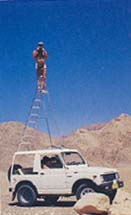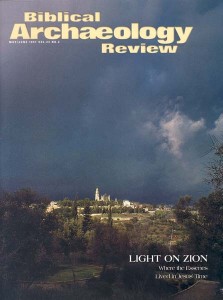Desert Shrines Dedicated to Imageless Gods
Sidebar to: Picturing Imageless Deities
“I don’t know about a motorbike,” archaeologist Uzi Avner (pictured below) insists, responding to rumors that he carries out his fieldwork on a motorcycle. Instead, Avner says he uses a jeep to get to most of the nearly 1,500 archaeological sites he has surveyed in the Negev and Sinai deserts.

For 25 years Avner has documented desert sites for the Israel Antiquities Authority (IAA). He has served as the IAA’s District Archaeologist of the Southern Negev for the past seven years, leading a team that surveys, excavates and preserves as many of the area’s sites as possible before real estate development or army maneuvers destroy them forever. Several hundred sites have already been studied through his team’s efforts, but the work is a constant struggle. “I’m trying to protect the archaeological remains and the cultural heritage of the Negev as much as I can,” he says. “I do not always succeed.”
Avner’s interest in archaeology began in the late 1960s. He had spent some time in the Israeli army and on a kibbutz and decided he wanted to learn yediat ha’retz—a Hebrew term encompassing the natural sciences, history and archaeology. He began work as a guide and teacher at the Eilat Field School in the southern Negev. In 1969, Avner became the first resident archaeological inspector for the Eilat area.
Already a library member? Log in here.
Institution user? Log in with your IP address.

